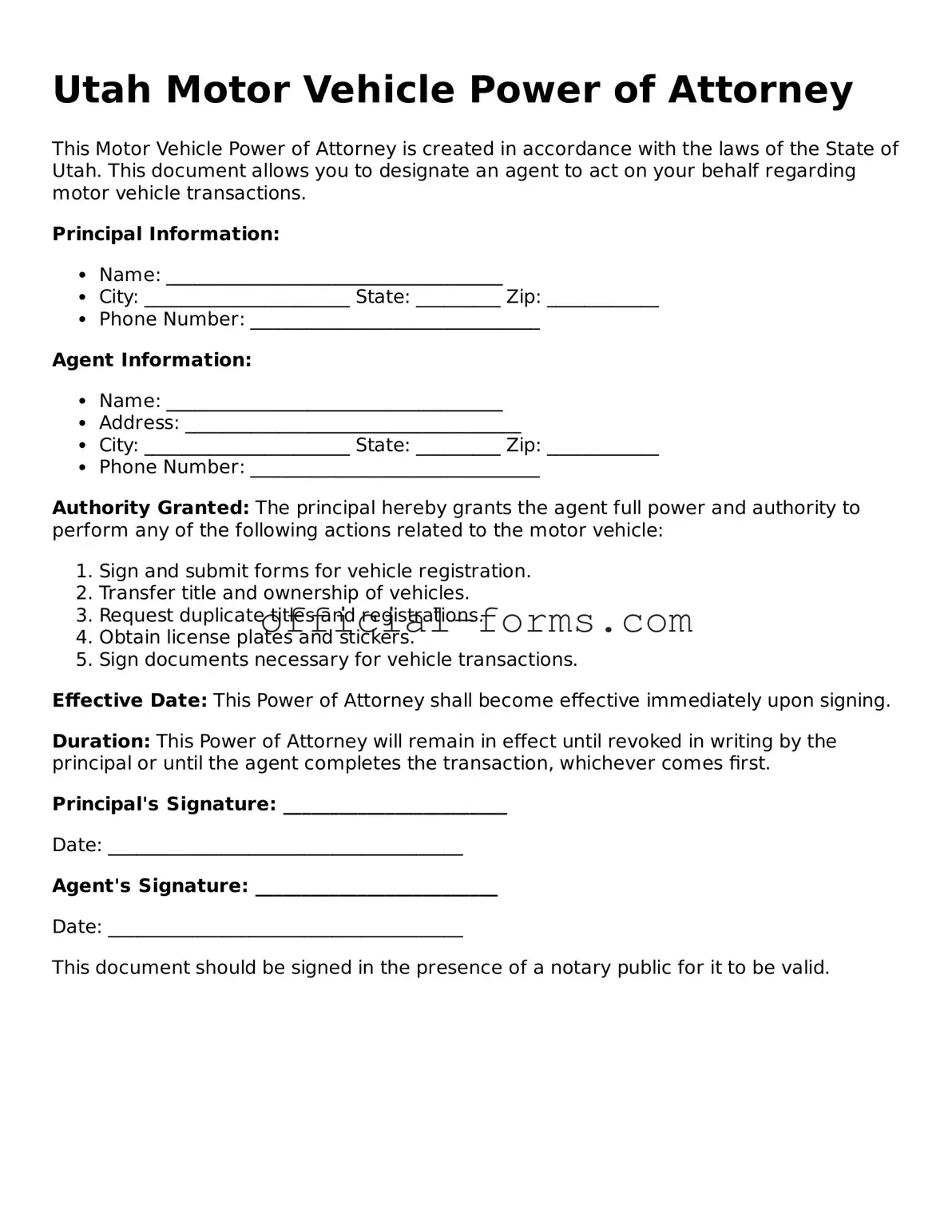Filling out the Utah Motor Vehicle Power of Attorney form can be a straightforward process, but many individuals make common mistakes that can lead to delays or complications. One frequent error is not providing complete information. When filling out the form, it’s essential to include all required details such as the names and addresses of both the principal and the agent. Omitting any information can render the form invalid.
Another common mistake is failing to sign and date the form. The principal must sign the document to give it legal weight. Without a signature, the form cannot be processed. Additionally, the date of signing is crucial as it establishes when the authority was granted.
People often overlook the need for witnesses or notarization. In Utah, while it is not always required, having a notary public witness the signing can help verify the authenticity of the document. This extra step can prevent potential disputes about the validity of the power of attorney.
Incorrectly identifying the scope of authority granted is another pitfall. The form allows for specifying the powers the agent will have. If this section is vague or incomplete, the agent may not have the necessary authority to act on behalf of the principal. Clear and precise language is essential to avoid confusion.
Some individuals mistakenly assume that the Power of Attorney is permanent. In reality, it can be revoked at any time by the principal as long as they are of sound mind. Not understanding this can lead to unnecessary concerns about losing control over one’s affairs.
Another mistake involves using outdated forms. Laws and requirements can change, so it’s important to ensure you are using the most current version of the Utah Motor Vehicle Power of Attorney form. Using an outdated form may lead to complications or rejection of the document.
People also tend to ignore the importance of keeping a copy of the completed form. Once the form is filled out and submitted, having a personal copy is crucial for record-keeping and future reference. This can be especially helpful if any questions arise later regarding the authority granted.
Misunderstanding the role of the agent is yet another issue. The agent should be someone trustworthy, as they will have significant control over the principal’s vehicle-related matters. Choosing someone without considering their reliability can lead to problems down the line.
Lastly, neglecting to review the form before submission is a common oversight. Taking a moment to double-check all entries can catch errors that may have been overlooked initially. This simple step can save time and prevent the need for resubmission.
